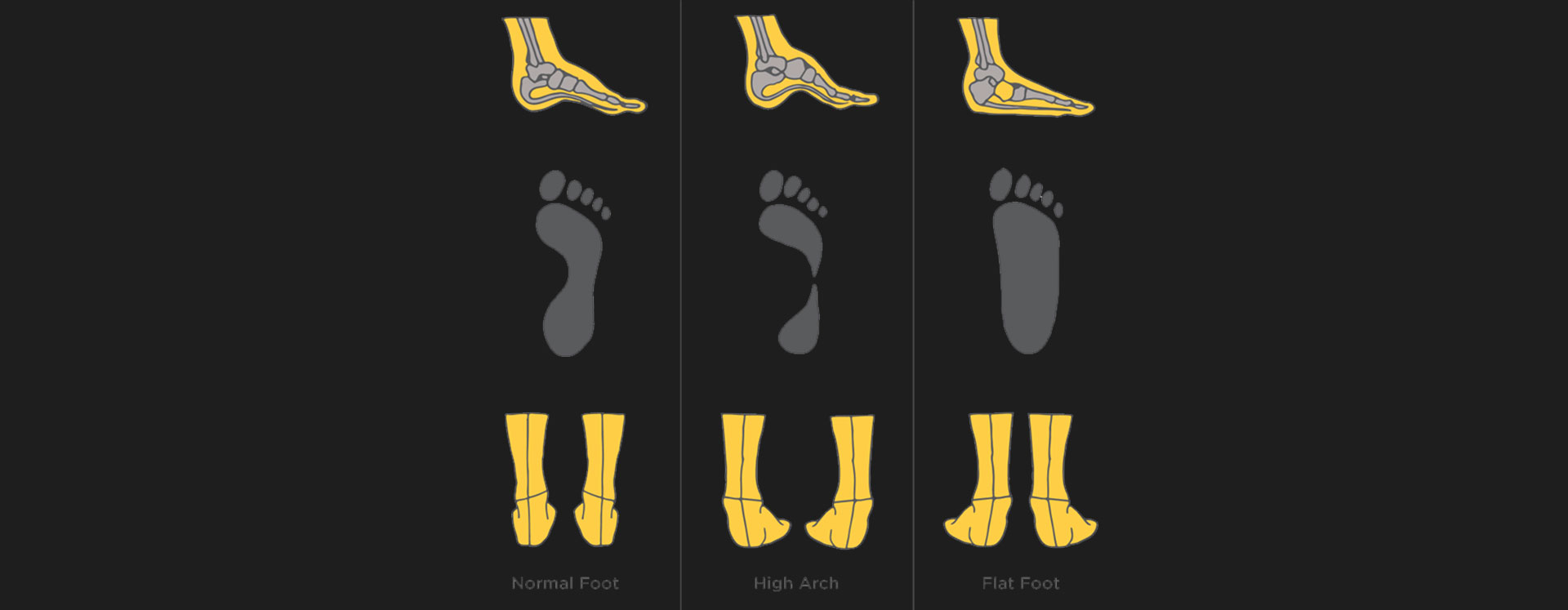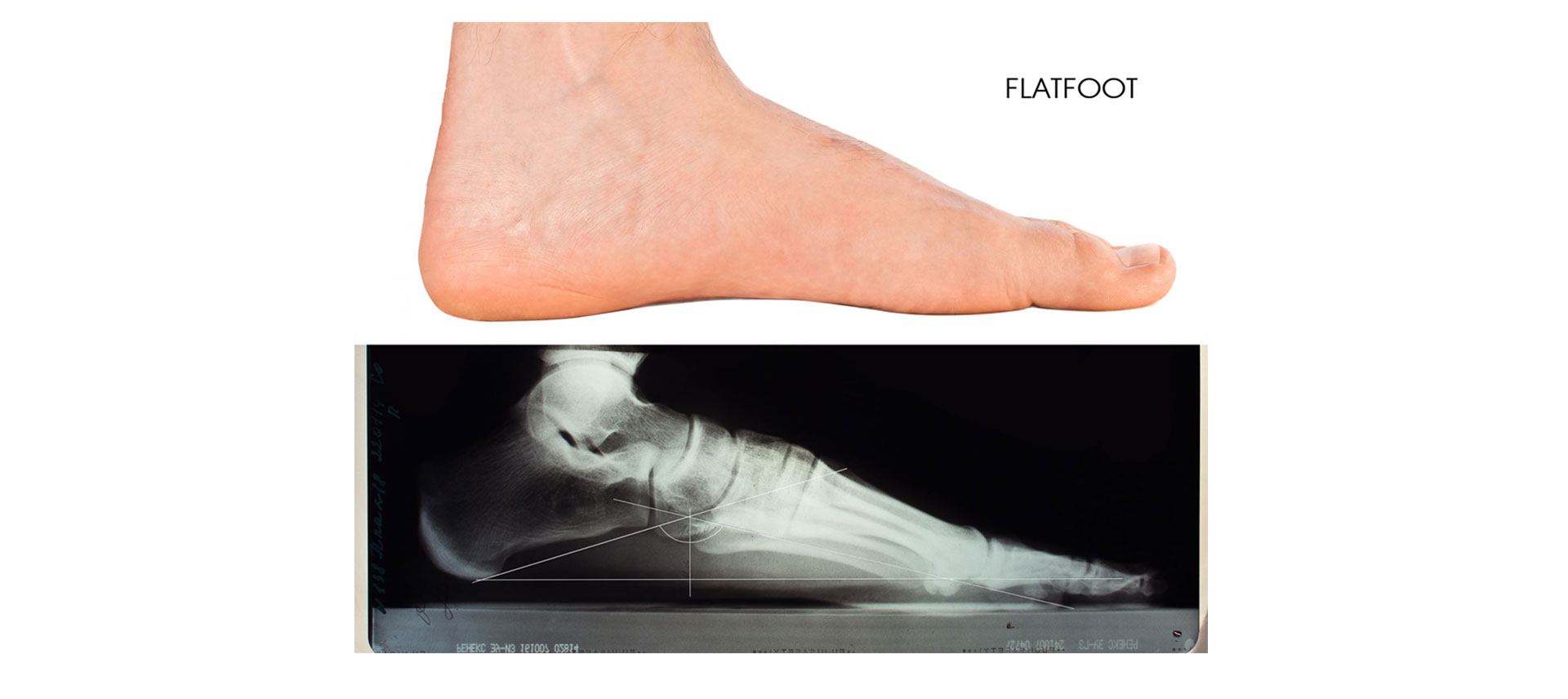FLAT FEET
FOOT
PES PLANUS
AKA FLAT FEET

Pes Planus — more commonly known as flat feet — is a structural problem where the foot has lost its arch. As a result, the entire bottom of the foot makes contact with the ground. Flat feet are a common condition, especially in children, or in older people who have lost strength in their tendons with age. In some cases, flat feet develop after a foot or ankle injury.
For most people, Pes Planus is painless and asymptomatic. However, this condition can lead to problems in ankle and knee alignment. What could be of minimal concern to the average person can be a big issue for any type of athlete. Without an arch, the foot tends to overpronate, or roll inwards. This places more stress on the foot, and provides less stability. Athletes who are constantly running, jumping, and pivoting on flat feet will be striking their feet at an unnatural angle, which might lead to pain in nearby joints, or other foot problems like plantar fasciitis.
Risk factors such as obesity, diabetes, arthritis, and pregnancy can make it more likely that an adult will acquire flat feet later in life. However, at MOTUS many of the Pes Planus conditions we treat have occurred as a result of arch weakness from overuse, or an injury like a rupture of the posterior tibial tendon. The arch of the foot is supported by the posterior tibialis tendon, as well as several other ligaments and muscle. Injury to any of these could cause flat feet to develop. The condition can also develop in athletes with excessive tightness in the Achilles tendon or calf muscles

If we see a patient with flat feet at MOTUS, we know to look beyond the structure of the foot. Our method is to address every condition by looking at the function of the body as a whole. We will work with our patients to help them find the proper foot support and stretching routine to give them optimal stability throughout their athletic performance, and may decide that an athlete with flat feet needs custom orthotics.
We may also need to work with you to increase your flexibility and retrain your muscles to function properly and avoid compensation injuries. Because flat feet can alter the biomechanics of the lower limbs and spine, it’s important to address flat feet by conducting a thorough evaluation of the entire body and its movement.

3 Ways to Level Up Your Rehab and Injury Prevention With Us





